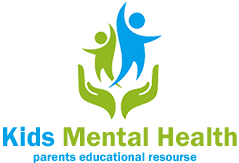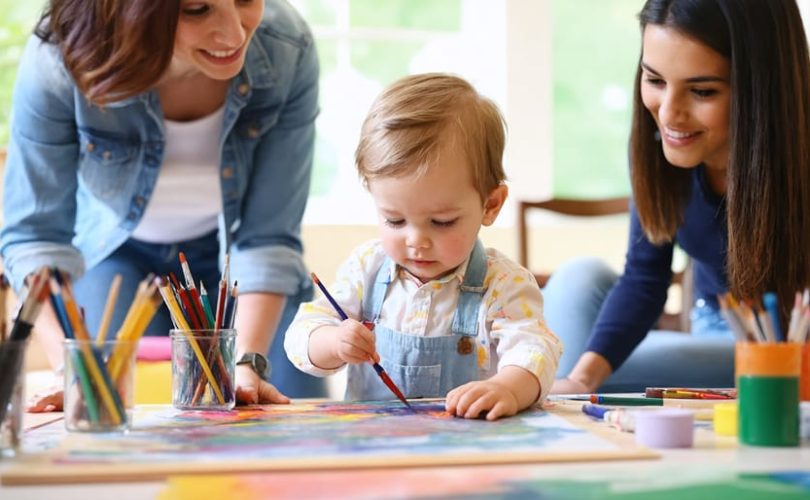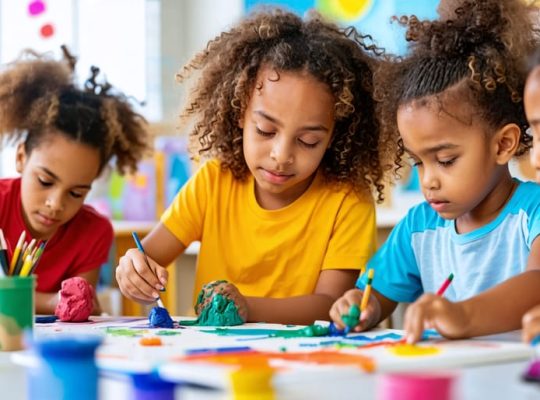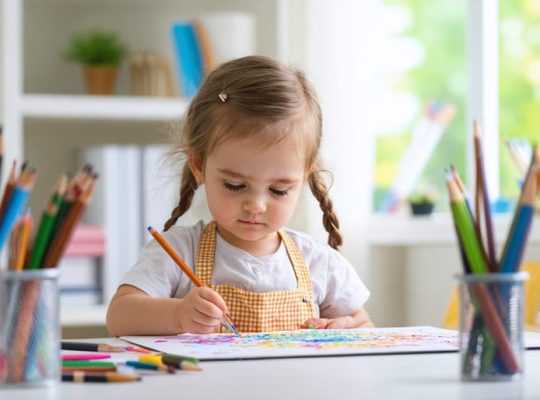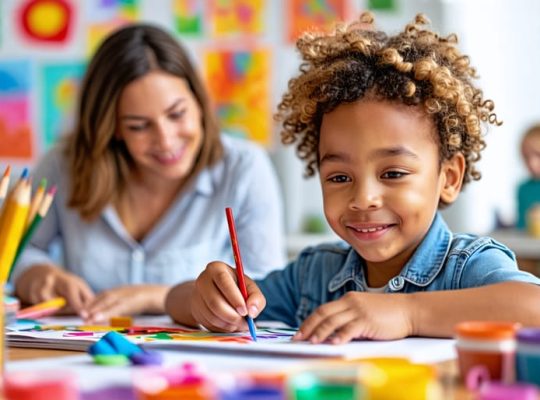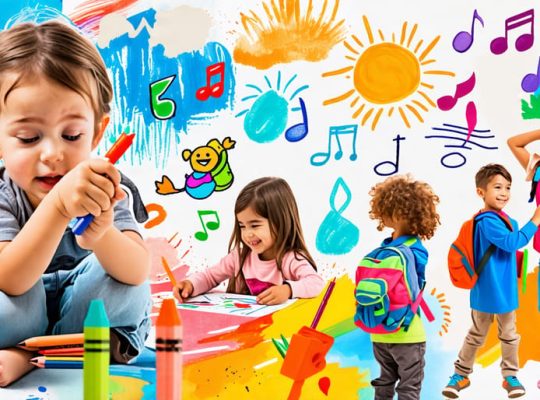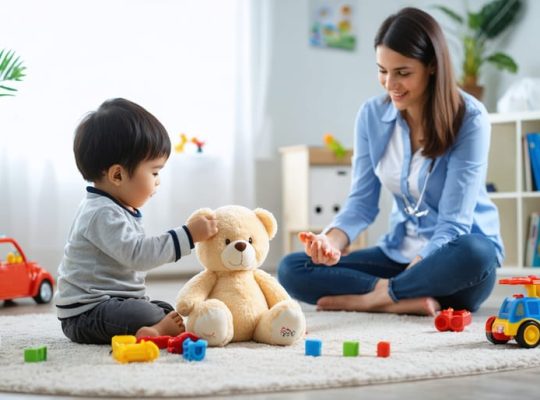In a world where mental health challenges affect people of all ages, art therapy benefits offer a powerful, evidence-based pathway to healing and growth. This gentle yet transformative approach combines creative expression with therapeutic techniques, providing a safe space for both children and adults to process emotions, reduce anxiety, and build resilience.
Unlike traditional talk therapy, art therapy harnesses the brain’s natural ability to heal through creative expression, making it particularly effective for those who struggle to verbalize their feelings. Whether it’s through painting, sculpting, or drawing, this therapeutic approach breaks down barriers and opens new channels of communication that words alone cannot achieve.
Recent studies have shown that art therapy can significantly reduce stress hormones, improve emotional regulation, and enhance overall mental well-being. For children especially, this approach offers a natural, non-threatening way to express complex emotions and work through challenging experiences. As we explore these nine remarkable benefits, you’ll discover how this innovative therapy can support mental health, foster personal growth, and create lasting positive change.
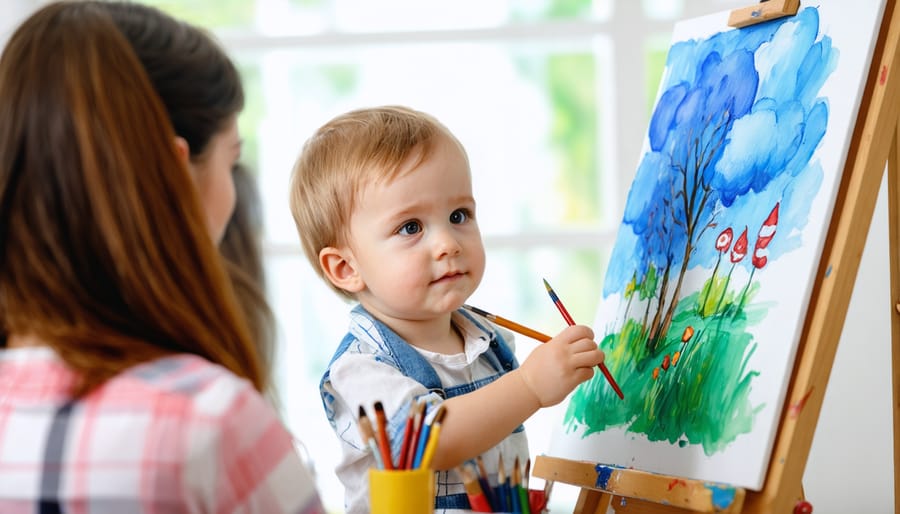
How Art Therapy Helps Children Express Complex Emotions
Creating a Safe Space for Emotional Expression
Art therapy creates a gentle, judgment-free environment where children can express complex emotions through art rather than words. For many children, talking about difficult feelings or traumatic experiences can be overwhelming or scary. With art materials as their tools, kids can communicate their inner world without the pressure of finding the right words or facing direct questioning.
Whether through painting, drawing, or sculpting, children feel more in control of their emotional expression when creating art. The creative process serves as a buffer, allowing them to process and share their feelings at their own pace. This safe distance helps reduce anxiety and makes it easier for children to open up about challenging experiences.
Art therapists often observe that children who struggle to verbalize their emotions become more communicative and relaxed when engaged in artistic activities. The artwork itself becomes a bridge for meaningful conversations and healing connections with their therapist and caregivers.
Building Emotional Vocabulary Through Art
Art therapy provides children with a powerful way to express emotions they might struggle to put into words. Through drawing, painting, and sculpting, children naturally develop a richer emotional vocabulary, helping them recognize and name their feelings more effectively. When a child creates art, they often unconsciously choose colors, shapes, and symbols that reflect their emotional state.
For example, a child experiencing anxiety might use dark colors or confined spaces in their artwork, while a happy child might gravitate toward bright colors and expansive designs. Art therapists help children explore these choices, gently guiding them to understand the connection between their artistic expressions and their feelings.
As children build this emotional awareness through art, they become more confident in expressing themselves verbally too. This process creates a natural bridge between their inner emotional world and their ability to communicate with others, fostering healthier emotional development and stronger relationships with family members and peers.
The Social Development Benefits of Art Therapy
Group Art Therapy and Social Skills
Group art therapy sessions provide a unique opportunity for participants to develop and strengthen their social skills while engaging in creative activities. When children work together on collaborative art projects, they naturally learn essential social skills like sharing, turn-taking, and respecting others’ ideas.
During these sessions, participants often find themselves naturally engaging in conversations about their artwork, helping them build communication skills and form meaningful connections with peers. A child who might struggle with verbal expression can find common ground with others through shared artistic experiences.
As Lisa Martinez, an art therapist with 15 years of experience, notes, “I’ve witnessed remarkable transformations in children who initially struggled with social interaction. Through group art projects, they learn to collaborate, express themselves, and develop empathy for others in a safe, supportive environment.”
Group art therapy also helps reduce feelings of isolation and builds a sense of community. Whether creating a collective mural or working on individual pieces side by side, participants experience the joy of belonging and mutual support. This shared creative journey often leads to lasting friendships and improved social confidence that extends well beyond the therapy room.
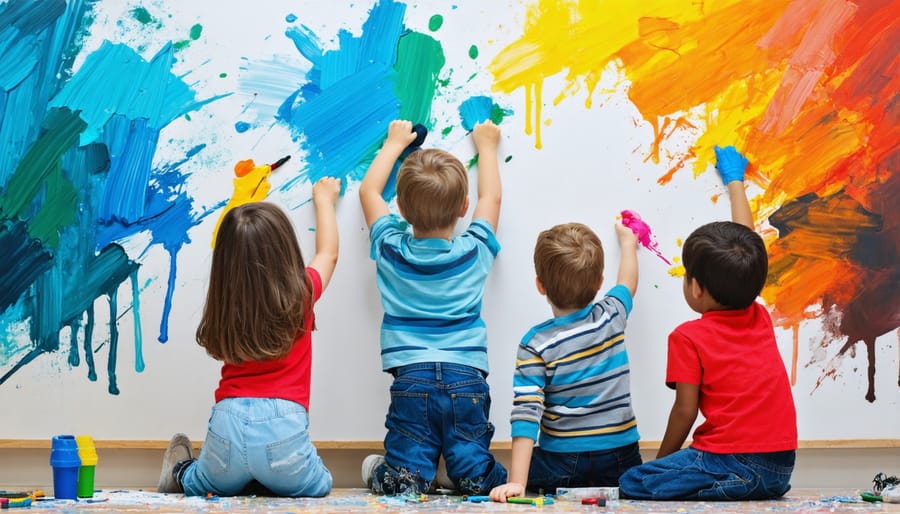
Building Confidence Through Creative Expression
Art therapy provides a unique platform for building self-confidence through creative expression activities. When children create art, they experience a sense of accomplishment that naturally boosts their self-esteem. Each completed artwork, whether it’s a simple drawing or an elaborate sculpture, represents a personal achievement that they can be proud of.
As art therapist Sarah Johnson explains, “When children see their artistic creations displayed or receive positive feedback, it validates their efforts and strengthens their belief in their abilities.” This confidence often extends beyond the art room, encouraging children to take more social risks and express themselves more freely in other areas of life.
The non-competitive nature of art therapy makes it particularly effective for building confidence. Unlike many other activities, there’s no “right” or “wrong” way to create art. This freedom allows children to develop their unique style and voice without fear of judgment. As they experiment with different materials and techniques, they learn to trust their creative instincts and develop a stronger sense of self-worth.
Cognitive Development Through Art Therapy
Art therapy offers remarkable cognitive benefits that extend far beyond simple creative expression. When children engage in art-making activities, they naturally develop problem-solving skills as they figure out how to translate their ideas onto paper or canvas. They learn to make decisions about colors, materials, and composition, strengthening their decision-making abilities with each artistic choice.
During art therapy sessions, children often experience improved concentration and focus. As Sarah Johnson, a pediatric art therapist with 15 years of experience, explains, “When children are fully immersed in creating art, they enter a state of flow that helps train their attention span and reduces distractibility.”
The process of creating art also enhances memory and learning capabilities. Children must remember specific techniques, color combinations, and steps in their creative process. This cognitive exercise strengthens neural pathways and supports better information retention in other areas of learning.
Visual-spatial skills see significant improvement through art therapy as well. Children learn to understand relationships between objects, develop depth perception, and improve hand-eye coordination. These skills are particularly valuable for academic subjects like mathematics and science.
Another cognitive benefit is enhanced executive functioning. Through art therapy, children practice planning, organizing their thoughts, and managing time – all while expressing themselves creatively. They learn to break down complex projects into manageable steps and develop strategies to achieve their artistic vision.
Parents often report noticing improvements in their children’s problem-solving approaches outside of therapy sessions. One mother shared, “Since starting art therapy, my daughter approaches challenges with more creativity and confidence. She’s learned to think outside the box and consider multiple solutions to problems.”
Art Therapy for Trauma and Anxiety
Art therapy provides a safe, non-verbal outlet for children to process traumatic experiences and manage anxiety. When words become difficult to express, art allows children to communicate their feelings, fears, and experiences through colors, shapes, and creative expression.
Through guided art activities, children can externalize their inner turmoil in a way that feels less threatening than direct conversation. A child who has experienced trauma might draw their “worry monster” or create a safe place using clay, helping them gain a sense of control over their emotions. This visual representation often makes it easier for therapists and caregivers to understand what the child is going through.
Many children with anxiety find comfort in the rhythmic, repetitive motions of drawing or painting. These activities naturally encourage mindfulness and help regulate breathing patterns, creating a calming effect on the nervous system. The process of creating art also releases dopamine, the “feel-good” hormone, which can help reduce stress and anxiety levels.
Sarah Martinez, a child art therapist with 15 years of experience, shares: “I’ve witnessed remarkable transformations in children who initially struggled to talk about their trauma. Through art, they gradually build confidence to express their stories and develop healthy coping mechanisms.”
Art therapy sessions can include activities like creating emotion wheels, designing worry boxes, or making comfort collages. These projects help children identify triggers, develop self-soothing strategies, and build resilience. Over time, many children learn to use art independently as a coping tool when feeling overwhelmed or anxious.
Remember that healing from trauma takes time, and art therapy provides a gentle, child-centered approach to this journey.
Physical and Sensory Benefits
Art therapy offers remarkable physical and sensory benefits that extend beyond emotional healing. When children engage in artistic activities, they naturally develop fine motor skills through actions like holding brushes, molding clay, or cutting paper. These movements strengthen hand-eye coordination and manual dexterity, which are essential for everyday tasks like writing and self-care.
Dr. Sarah Chen, an occupational therapist, notes that “art activities serve as powerful therapeutic tools for children with sensory processing challenges.” Through various art materials, children experience different textures, pressures, and sensations that help regulate their sensory responses. For instance, squishing play dough can be calming for overwrought children, while the smooth flow of watercolors might help others focus and concentrate.
The physical aspects of art-making also support proper posture and core strength as children maintain positions while creating. Working at an easel encourages upright posture, while floor activities promote core stability and flexibility. These benefits are particularly valuable for children with physical challenges or developmental delays.
Additionally, art therapy can help children become more aware of their body movements and spatial relationships. Whether they’re reaching across a canvas or carefully controlling their movements to create precise lines, these activities enhance body awareness and spatial understanding in a natural, enjoyable way.
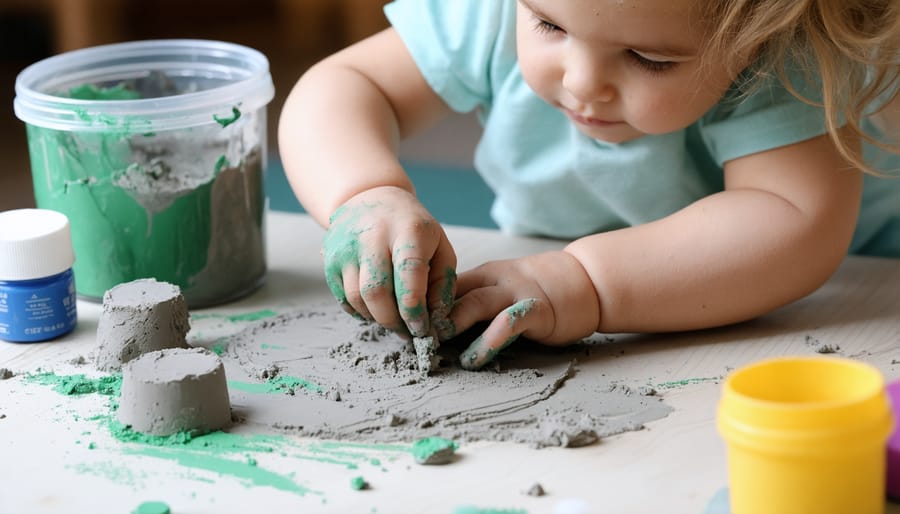
Supporting Self-Regulation Skills
Art therapy provides children with a safe and structured environment to develop crucial self-regulation skills, helping them manage their emotions and behaviors more effectively. Through creative expression, children learn to identify, process, and cope with complex feelings that they might struggle to verbalize.
When children engage in art-making, they naturally practice emotional regulation. The rhythmic motions of drawing, painting, or sculpting can have a calming effect on their nervous system, helping them feel more centered and in control. As art therapist Sarah Johnson explains, “The simple act of coloring or molding clay can help children transition from a state of distress to one of focused calm.”
Art therapy sessions also teach children practical coping strategies they can use in everyday life. For instance, a child might learn to draw their feelings when overwhelmed or create a personal “calm down corner” with their artwork. These visual tools become valuable resources for managing stress, anxiety, and strong emotions.
The process of creating art also helps children develop patience and frustration tolerance. When working on an art project, they learn to accept imperfections, make adjustments, and persist through challenges – all essential skills for emotional resilience. Many parents report seeing significant improvements in their children’s ability to handle disappointment and setbacks after participating in art therapy.
This therapeutic approach empowers children to become more self-aware and develop their own toolkit of coping mechanisms, setting the foundation for lifelong emotional well-being.
Art therapy offers a powerful combination of creative expression and therapeutic support that can transform children’s lives. As we’ve explored throughout this article, from reducing anxiety and building self-esteem to improving motor skills and enhancing emotional regulation, the benefits of art therapy are both diverse and profound.
For parents considering art therapy for their children, remember that every paint stroke, clay sculpture, or crayon drawing can be a step toward better mental health and emotional well-being. The safe, nurturing environment provided by qualified art therapists allows children to express themselves freely, process complex emotions, and develop essential life skills.
Whether your child is dealing with anxiety, trauma, behavioral challenges, or simply needs additional emotional support, art therapy can provide a gentle yet effective path to healing and growth. Consider reaching out to local art therapy professionals to learn more about how this therapeutic approach might benefit your child. Every child’s journey is unique, and art therapy offers a beautiful way to support their mental health while nurturing their creative spirit.
Remember, investing in your child’s emotional well-being today can lead to a lifetime of better mental health outcomes.
